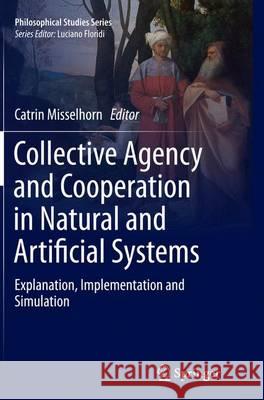Collective Agency and Cooperation in Natural and Artificial Systems: Explanation, Implementation and Simulation » książka
topmenu
Collective Agency and Cooperation in Natural and Artificial Systems: Explanation, Implementation and Simulation
ISBN-13: 9783319371856 / Angielski / Miękka / 2016 / 311 str.
Collective Agency and Cooperation in Natural and Artificial Systems: Explanation, Implementation and Simulation
ISBN-13: 9783319371856 / Angielski / Miękka / 2016 / 311 str.
cena 200,77
(netto: 191,21 VAT: 5%)
Najniższa cena z 30 dni: 192,74
(netto: 191,21 VAT: 5%)
Najniższa cena z 30 dni: 192,74
Termin realizacji zamówienia:
ok. 22 dni roboczych.
ok. 22 dni roboczych.
Darmowa dostawa!
Kategorie BISAC:
Wydawca:
Springer
Seria wydawnicza:
Język:
Angielski
ISBN-13:
9783319371856
Rok wydania:
2016
Wydanie:
Softcover Repri
Ilość stron:
311
Oprawa:
Miękka
Wolumenów:
01











